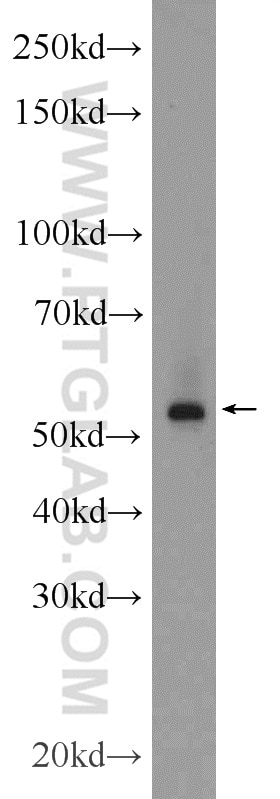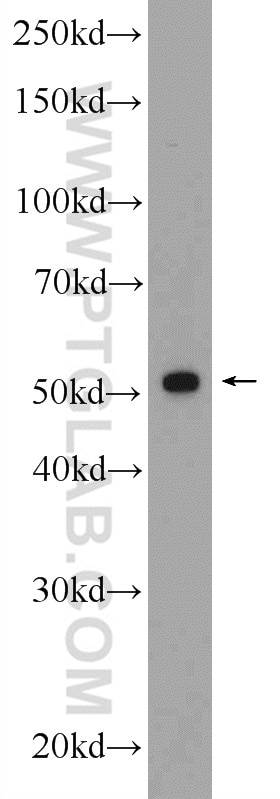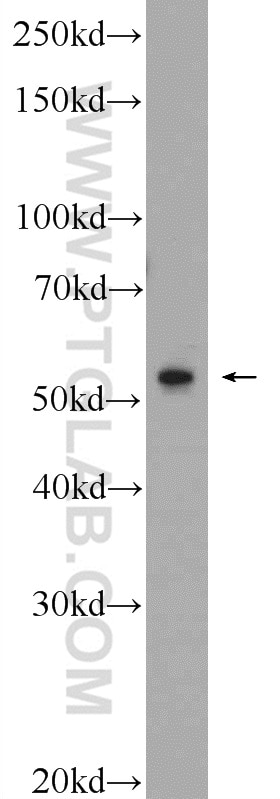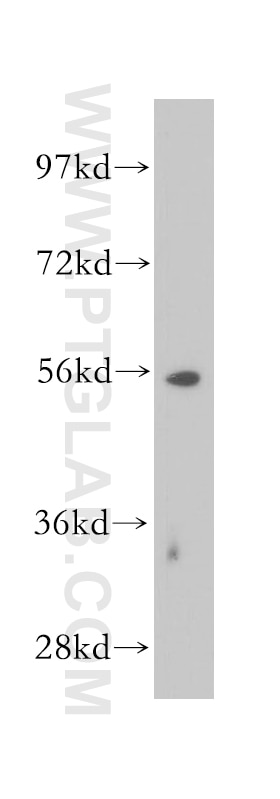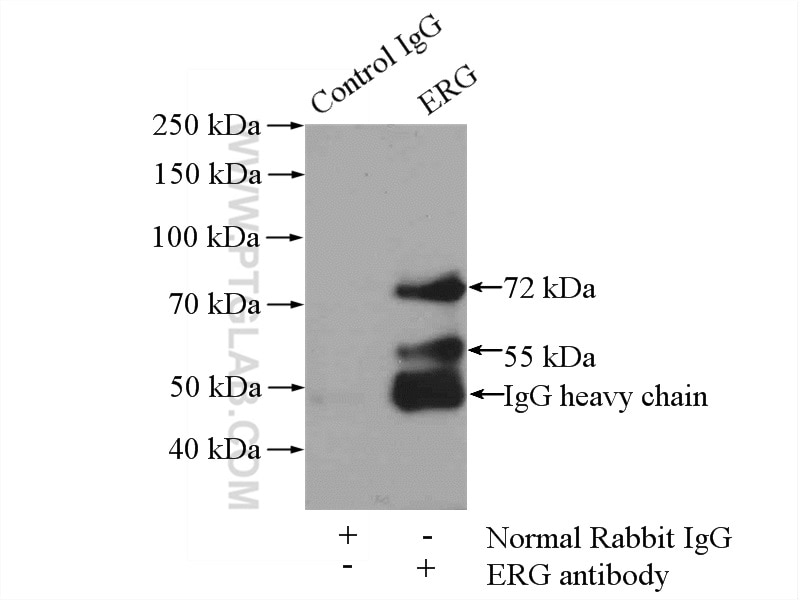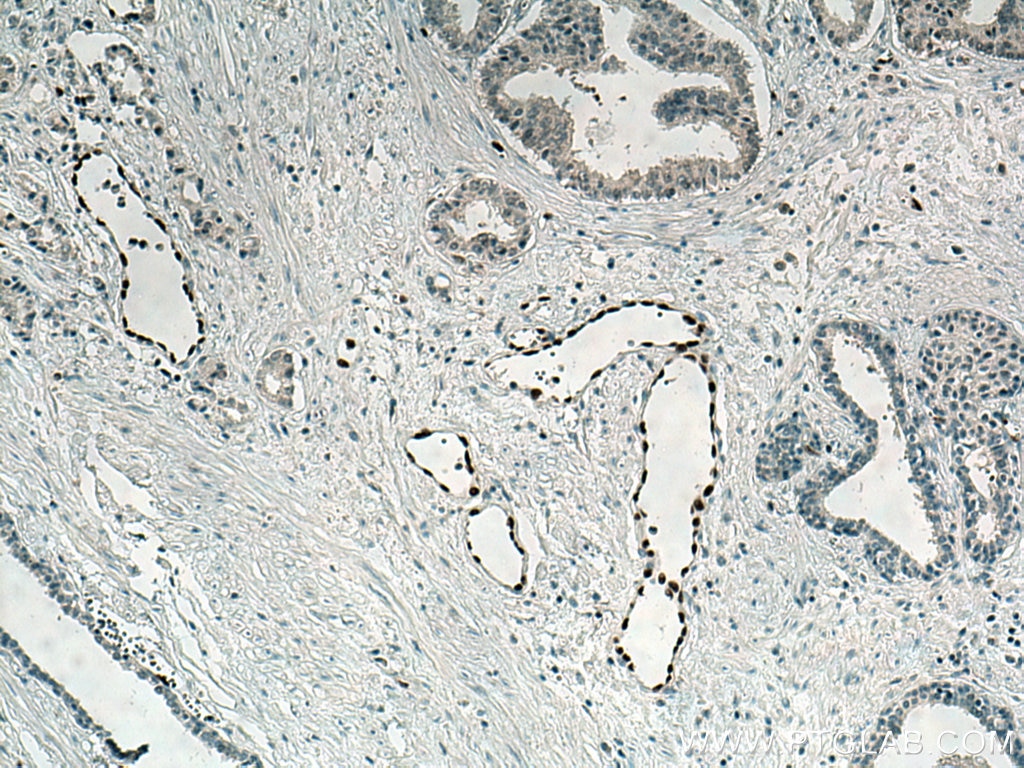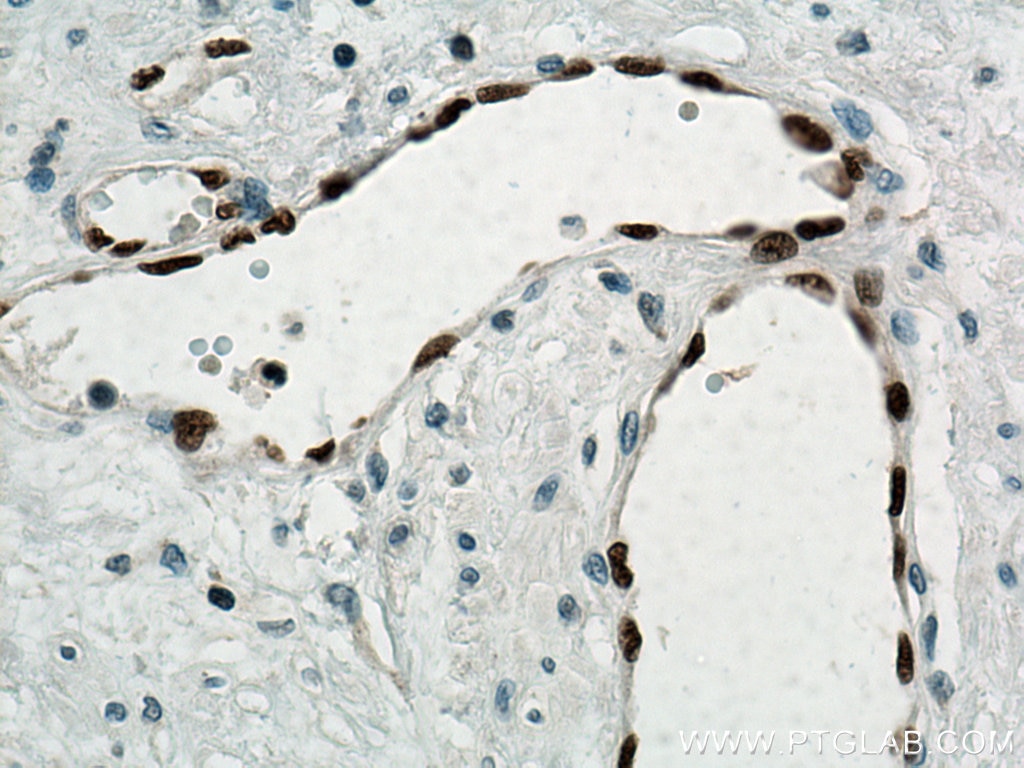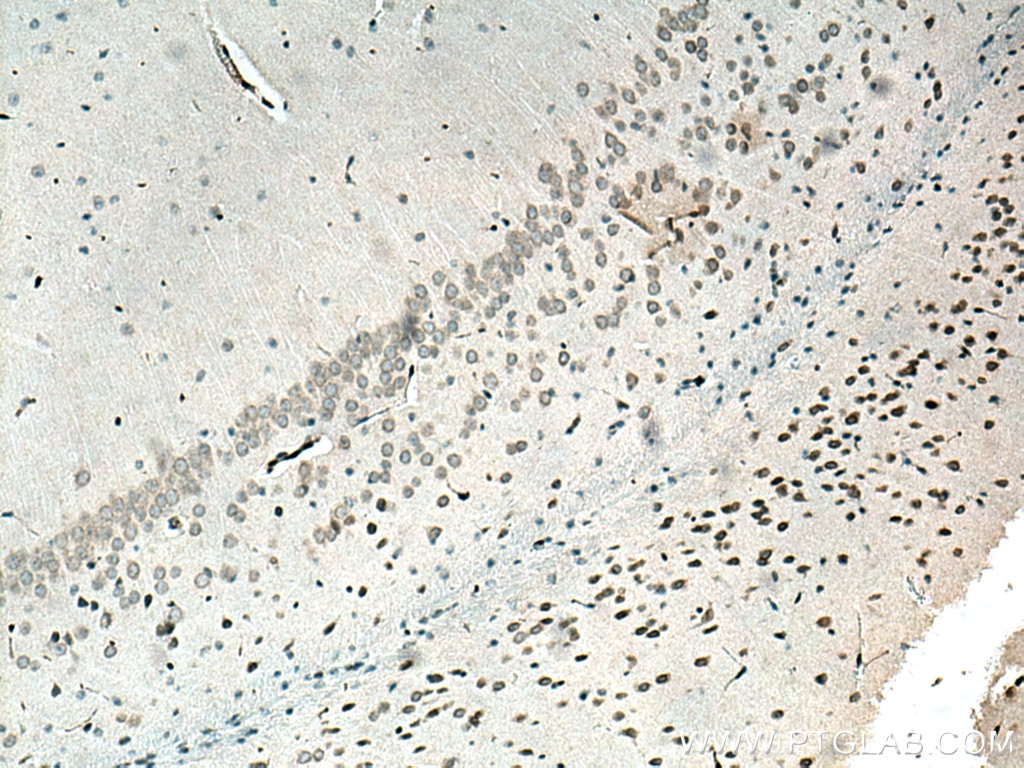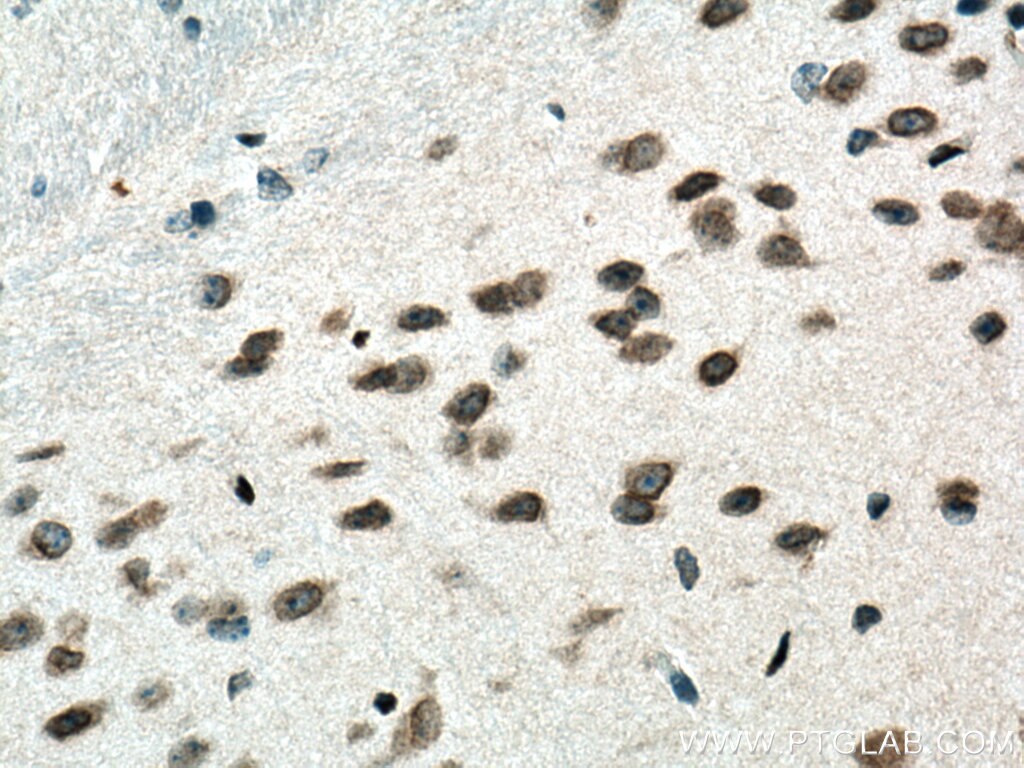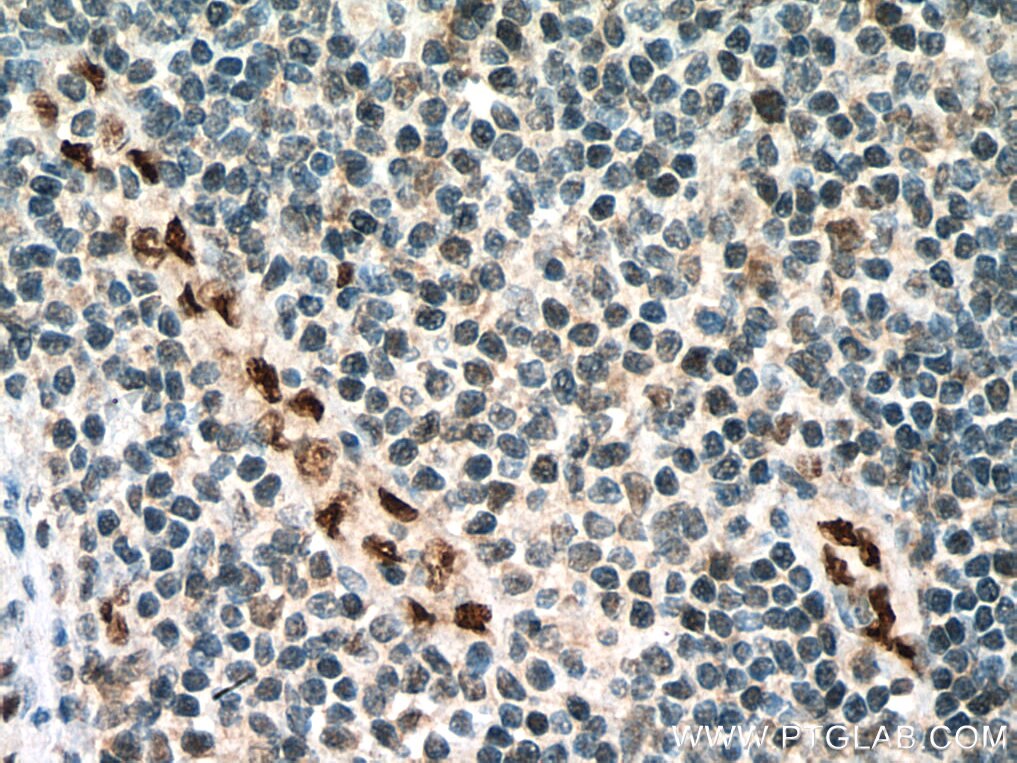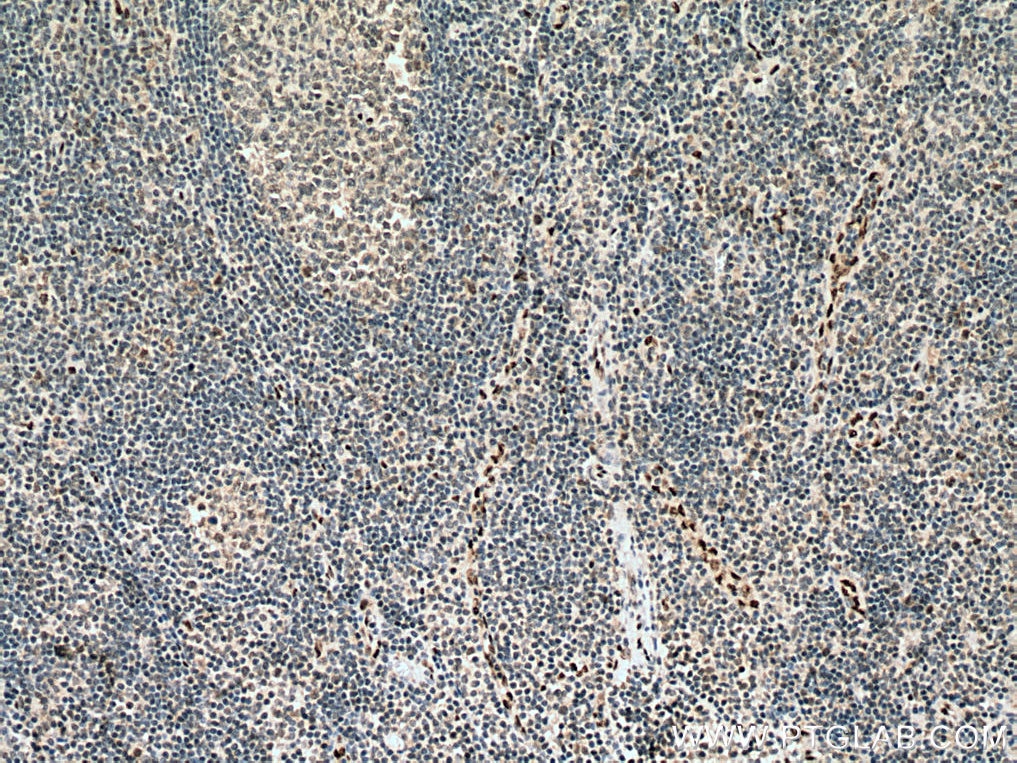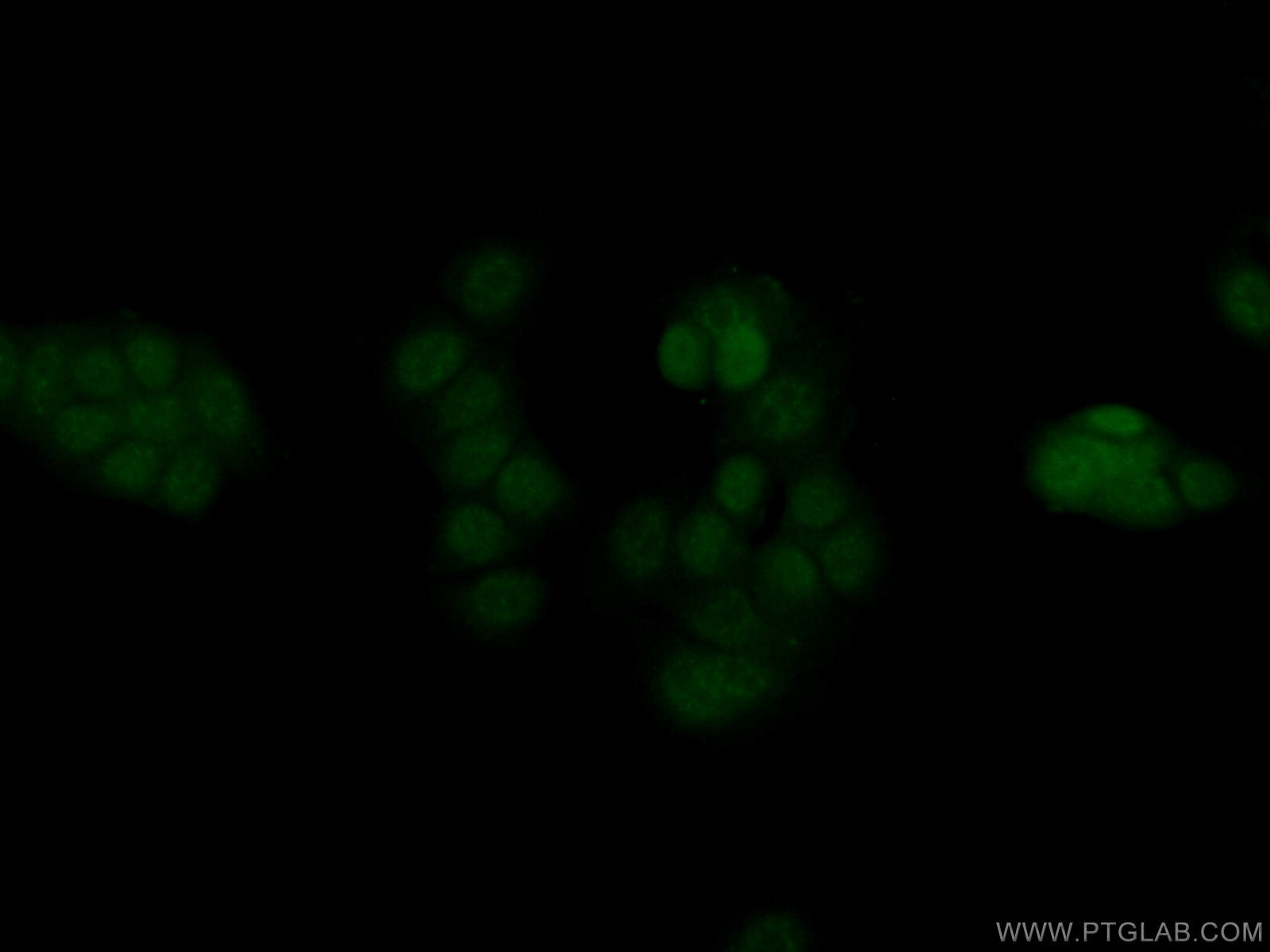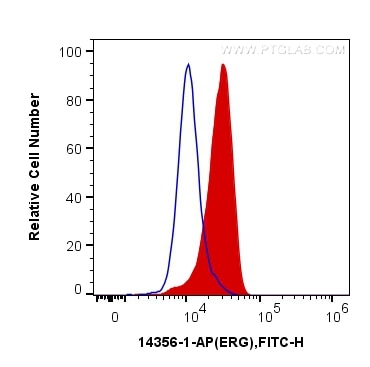Validation Data Gallery
Tested Applications
| Positive WB detected in | MCF-7 cells, HEK-293 cells |
| Positive IP detected in | MCF-7 cells |
| Positive IHC detected in | human prostate cancer tissue, mouse brain tissue, human tonsillitis tissue Note: suggested antigen retrieval with TE buffer pH 9.0; (*) Alternatively, antigen retrieval may be performed with citrate buffer pH 6.0 |
| Positive IF/ICC detected in | MCF-7 cells |
| Positive FC (Intra) detected in | MCF-7 cells |
Recommended dilution
| Application | Dilution |
|---|---|
| Western Blot (WB) | WB : 1:500-1:1000 |
| Immunoprecipitation (IP) | IP : 0.5-4.0 ug for 1.0-3.0 mg of total protein lysate |
| Immunohistochemistry (IHC) | IHC : 1:600-1:2400 |
| Immunofluorescence (IF)/ICC | IF/ICC : 1:50-1:500 |
| Flow Cytometry (FC) (INTRA) | FC (INTRA) : 0.40 ug per 10^6 cells in a 100 µl suspension |
| It is recommended that this reagent should be titrated in each testing system to obtain optimal results. | |
| Sample-dependent, Check data in validation data gallery. | |
Published Applications
| KD/KO | See 1 publications below |
| WB | See 4 publications below |
| IHC | See 1 publications below |
| IF | See 2 publications below |
Product Information
14356-1-AP targets ERG in WB, IHC, IF/ICC, FC (Intra), IP, ELISA applications and shows reactivity with human, mouse, rat samples.
| Tested Reactivity | human, mouse, rat |
| Cited Reactivity | human, mouse |
| Host / Isotype | Rabbit / IgG |
| Class | Polyclonal |
| Type | Antibody |
| Immunogen | ERG fusion protein Ag5708 相同性解析による交差性が予測される生物種 |
| Full Name | v-ets erythroblastosis virus E26 oncogene homolog (avian) |
| Calculated molecular weight | 55 kDa |
| Observed molecular weight | 55 kDa |
| GenBank accession number | BC040168 |
| Gene Symbol | ERG |
| Gene ID (NCBI) | 2078 |
| RRID | AB_2098423 |
| Conjugate | Unconjugated |
| Form | Liquid |
| Purification Method | Antigen affinity purification |
| UNIPROT ID | P11308 |
| Storage Buffer | PBS with 0.02% sodium azide and 50% glycerol , pH 7.3 |
| Storage Conditions | Store at -20°C. Stable for one year after shipment. Aliquoting is unnecessary for -20oC storage. |
Background Information
ERG (ETS-related gene) is a member of the ETS family of transcription factors, which are downstream effectors of mitogenic signaling transduction pathway. ERG is a key regulator of cell proliferation, differentiation, angiogenesis, inflammation, and apoptosis. ERG is involved in chromosomal translocations, resulting in different fusion gene products, such as TMPSSR2-ERG and NDRG1-ERG in prostate cancer, EWS-ERG in Ewing's sarcoma and FUS-ERG in acute myeloid leukemia.
Protocols
| Product Specific Protocols | |
|---|---|
| WB protocol for ERG antibody 14356-1-AP | Download protocol |
| IHC protocol for ERG antibody 14356-1-AP | Download protocol |
| IF protocol for ERG antibody 14356-1-AP | Download protocol |
| IP protocol for ERG antibody 14356-1-AP | Download protocol |
| FC protocol for ERG antibody 14356-1-AP | Download protocol |
| Standard Protocols | |
|---|---|
| Click here to view our Standard Protocols |
Publications
| Species | Application | Title |
|---|---|---|
iScience Resident vascular Sca1+ progenitors differentiate into endothelial cells in vascular remodeling via miR-145-5p/ERG signaling pathway | ||
Cell Biosci Profile of chimeric RNAs and TMPRSS2-ERG e2e4 isoform in neuroendocrine prostate cancer | ||
J Cancer miR-223-5p targeting ERG inhibits prostate cancer cell proliferation and migration.
| ||
Cell Death Discov HDAC11 promotes both NLRP3/caspase-1/GSDMD and caspase-3/GSDME pathways causing pyroptosis via ERG in vascular endothelial cells. | ||
Exp Ther Med Rare angiolymphoid hyperplasia with eosinophilia examined through fine needle aspiration cytology, histopathology and immunophenotypic characterization: A case report | ||
Nat Commun DNA framework-engineered chimeras platform enables selectively targeted protein degradation |
